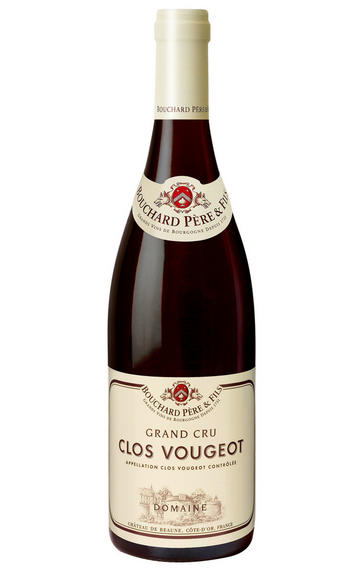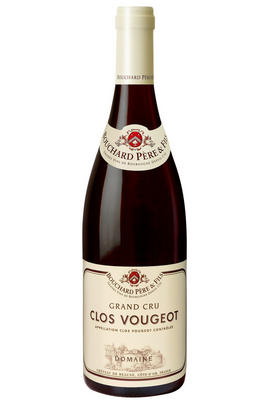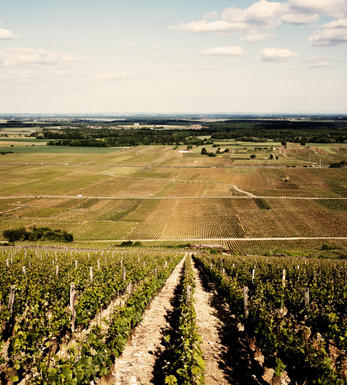
2013 Clos Vougeot, Grand Cru, Domaine Bouchard Père & Fils, Burgundy

About this WINE

Bouchard Pere et Fils
The Burgundian wine domaine of Bouchard Pére et Fils can trace its origins back to 1731 though it is no longer family owned. In 1995 the Champagne house, Joseph Henriot, acquired the company and quality has risen as a consequence.
Today Bouchard is led by Stéphane Follin Arbelet while the wines are made by Philippe Prost who has been with the company since 1978. An impressive gravity-flow winery on the Route de Savigny, the Cuvérie St Vincent, was completed in 2005, enabling them, to process all their wines with optimum efficiency.
Bouchard’s total holdings comprise 130 hectares, including 12ha of grand crus and 74ha of premier crus, which makes them the largest vineyard owners in the Côte d’Or (Côte de Nuits and Côte de Beaune).
Bouchard have good holdings in the village of Monthélie, which lies just beyond Volnay and looks down over Meursault. The village is best known for its red wines, a little firmer in structure than Volnay and of particular interest in perfect summers when the grapes can ripen fully.

Vougeot
Most of the wine produced in this small village comes from a single, walled Grand Cru vineyard, the famous Clos de Vougeot. The vineyard in its present form dates from 1336 (when it was first planted by monks of Cîteaux), although it was not until the following century that it was entirely enclosed by stone walls.
Clos de Vougeot is both the smallest commune and the largest Clos in the Cote d’Or. It consists of 50 hectares of vineyards shared among 82 owners, with six soil types. There is quite a difference in quality between the upper (best) and lower (least fine) parts of the vineyard, though in medieval times a blend from all sectors was considered optimum.Le Domaine de la Vougeraie makes a very fine white wine from Le Clos Blanc de Vougeot, first picked out by the monks of Cîteaux as being suitable ground for white grapes in the year 1110.
- Five hectares of village Vougeot
- 12 hectares of Premier Cru vineyards (four in all): Les Cras, Les Petits-Vougeots, Clos de la Perrière and Clos Blanc de Vougeot
- 51 hectares of Grand Cru vineyard – Clos de Vougeot
- Recommended producers: Domaine de la Vougeraie, Domaine Bertagna, Engel, Anne Gros, Grivot, Liger-Belair, Meo-Camuzet.

Pinot Noir
Pinot Noir is probably the most frustrating, and at times infuriating, wine grape in the world. However when it is successful, it can produce some of the most sublime wines known to man. This thin-skinned grape which grows in small, tight bunches performs well on well-drained, deepish limestone based subsoils as are found on Burgundy's Côte d'Or.
Pinot Noir is more susceptible than other varieties to over cropping - concentration and varietal character disappear rapidly if yields are excessive and yields as little as 25hl/ha are the norm for some climats of the Côte d`Or.
Because of the thinness of the skins, Pinot Noir wines are lighter in colour, body and tannins. However the best wines have grip, complexity and an intensity of fruit seldom found in wine from other grapes. Young Pinot Noir can smell almost sweet, redolent with freshly crushed raspberries, cherries and redcurrants. When mature, the best wines develop a sensuous, silky mouth feel with the fruit flavours deepening and gamey "sous-bois" nuances emerging.
The best examples are still found in Burgundy, although Pinot Noir`s key role in Champagne should not be forgotten. It is grown throughout the world with notable success in the Carneros and Russian River Valley districts of California, and the Martinborough and Central Otago regions of New Zealand.


Buying options
Add to wishlist
Description
A hugely dense black-purple colour, this has an amazing weight of flavour, black fruit, unctuous and opulent, just enough acidity and completely ripe tannins. Impeccable concentration, this is a great wine this year.
Jasper Morris, MW - Wine Buyer
The 2013 grapes were picked between 30th September and 11th October. The white skins were fragile so pressing was very gentle, the reds more robust and capable of a good proportion of whole bunch fermentation. Most wines are now in tank with bottling a little earlier than usual. An exceptional range of reds in particular from Bouchard this year.
wine at a glance
Delivery and quality guarantee